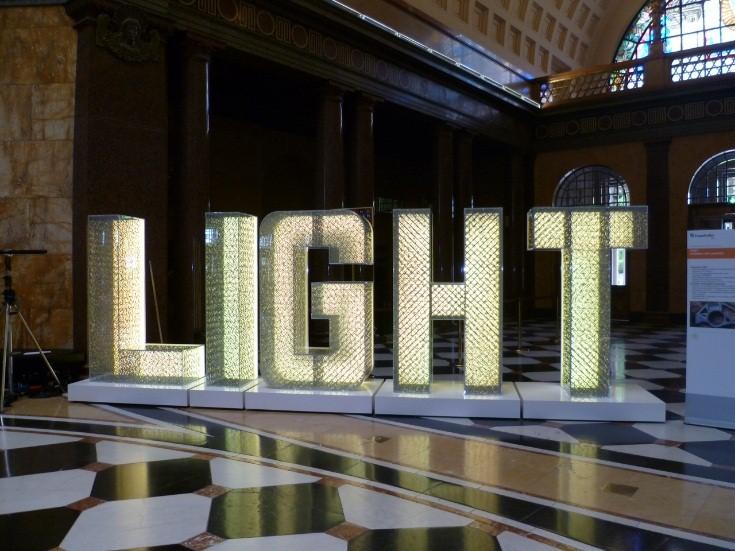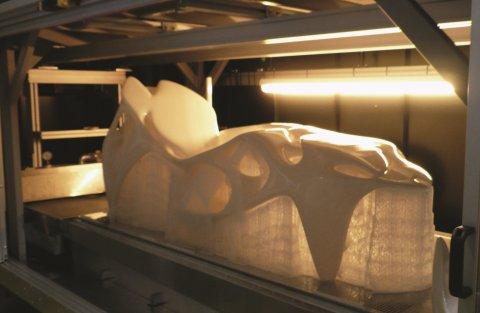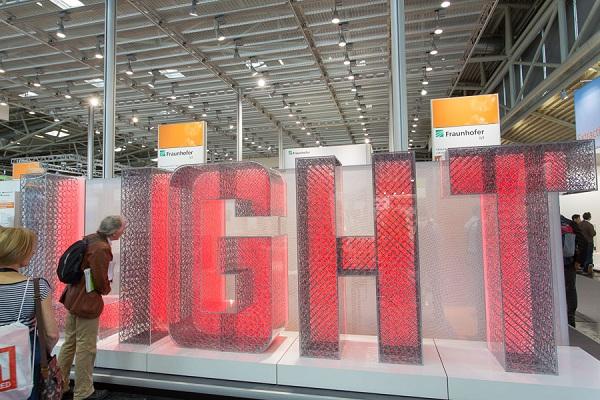Photonics is the science of using light for the transmission of information, and this field was launched with the invention of the laser in 1960. Since then, the technology has been developed to include applications in the 3D printing/additive manufacturing space through stereolithography, which uses photopolymerization, a process that uses light to link chains of molecules together in a layer by layer fashion. Things have evolved since the earliest days of the laser’s invention, and there was no better place to witness these changes than the LASER World of PHOTONICS 2015 event in Munich, Germany.
 This year’s event featured 1,227 exhibitors with 30,000 visitors between June 22 and 25, 2015. This exhibition is known as the most important platform for the international photonics industry. This year’s exhibition featured the important work of many established and emerging industry players, and Materialise, along with the Fraunhofer Institute for Laser Technology (ILT), stole the (light) show with the word LIGHT: each letter was stands 2 meters high and was 3D printed separately using stereolithography. While the final construction was quite lightweight, Materialise claims that the heaviest data set in its history was behind the printing of this show stopping display.
This year’s event featured 1,227 exhibitors with 30,000 visitors between June 22 and 25, 2015. This exhibition is known as the most important platform for the international photonics industry. This year’s exhibition featured the important work of many established and emerging industry players, and Materialise, along with the Fraunhofer Institute for Laser Technology (ILT), stole the (light) show with the word LIGHT: each letter was stands 2 meters high and was 3D printed separately using stereolithography. While the final construction was quite lightweight, Materialise claims that the heaviest data set in its history was behind the printing of this show stopping display.
While Fraunhofer ILT provided the drawing and original concept for the display, it was Materialise that used its 3-maticSTL software to design “extremely lightweight structures to populate the letters.” These structures were unique because they were self-supporting. Usually printing with stereolithography requires support structures, and here the challenge was not just designing self-supporting structures, but optimizing the parts’ orientation on the print bed. In order to do all of this well, the project ended up generating “the largest data set in Materialise history.”
A design with such a huge data set might crash a 3D printer, so the Materialise Build Processor software was used to slice and compress the data into smaller segments that the stereolithography machine could more easily work with. The Build Processor simplifies communication between software and machines so large files can be processed easily and machines can be prevented from crashing and sending the entire project into a tailspin. In order to compress the file as much as possible, the software engineers designed the 3-matic structures without any wall thicknesses. 3D geometry data was saved in “slice-files,” which maintains a lean design file. Thankfully, Materialise has Mammoth Stereolithography printers for projects like this! These machines, which are used commonly to build large parts for the automotive industry, can build very large parts quickly due to a patented “curtain recoating technology” that requires less time between layers.
Dries Vandecruys, Design Engineer at Materialise, summarizes what it was like to see the LIGHT project unfold:
“Watching a finished build emerge from liquid resin on one of Materialise’s Mammoth machines is always a fascinating sight. But it’s even more fascinating when the emerging model is an embodiment of all three of Materialise’s biggest strengths: engineering and design, software, and Additive Manufacturing.”
Once the LIGHT letters were successfully printed, using all of Materialise’s design, engineering, software, and 3D printing capabilities, the mammoth-sized letters were ready for the final touches of silver matte spray paint. Discuss this article in the Giant 3D Printed Letter forum on 3DPB.com. You can watch this enlightening process in the video below.
Subscribe to Our Email Newsletter
Stay up-to-date on all the latest news from the 3D printing industry and receive information and offers from third party vendors.
You May Also Like
Supply Chain Management and the Role of 3D Printing Digital Inventories
As the additive manufacturing (AM) industry grows beyond its humble roots as a rapid prototyping technology, it has been adopted by some of the world’s leading companies to produce not...
3D Printing Webinar and Event Roundup: April 28, 2024
In this week’s 3D Printing Webinar and Event Roundup, the Ceramics Expo is taking place in Michigan, Stratasys continues its advanced training courses, and SPE is holding a Polymer Characterization...
$25M to Back Sintavia’s Largest Expansion of Metal 3D Printing Capacity Since 2019
Sintavia, the digital manufacturing company specializing in mission-critical parts for strategic sectors, announced a $25 million investment to increase its production capacity, the largest expansion to its operations since 2019....
Velo3D Initiates Public Offering in a Bid to Strengthen Financial Foundations and Drive Future Growth
Velo3D (NYSE: VLD) has been among a number of publicly traded 3D printing firms that have attempted to weather the current macroeconomic climate. After posting a challenging financial report for 2023,...


































